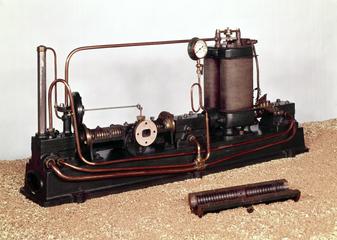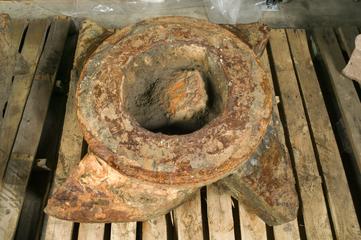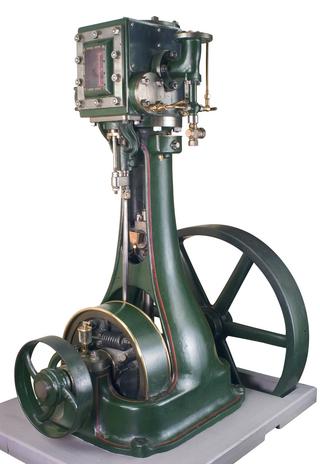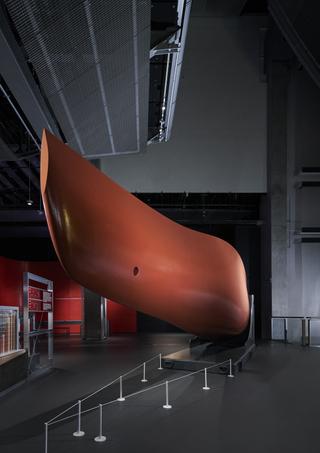
Metal component associated with the 100 K.W. Radial Flow Steam Turbine alternator with Generator
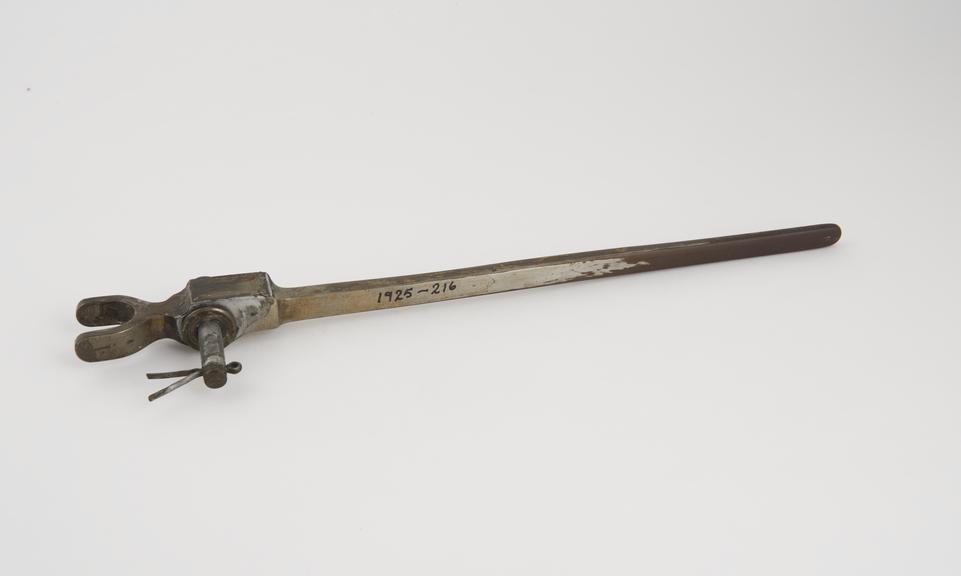
Metal component associated with the 100 K.W. Radial Flow Steam Turbine alternator with Generator, by C. A. Parsons and Company, Newcastle upon Tyne, Tyne and Wear, England, United Kingdom, 1891
Parsons' steam turbo-generator, 1891. Until the invention of the steam turbine by Charles Parsons (1854-1931) in 1884, steam engines could not turn fast enough to produce electricity efficiently on a large scale. Used at the Cambridge Electric Light Station, this turbo-generator was the first to show that turbines could be run as economically as the best steam engines. Turning at 4,800 revolutions per minute, it had a power output of 100 kilowatts, and operated for thirty years. Steam turbines still drive most generators today.
Details
- Category:
- Motive Power
- Object Number:
- 1925-216/2
- Materials:
- iron
- credit:
- Parsons, Charles Algernon, Sir
